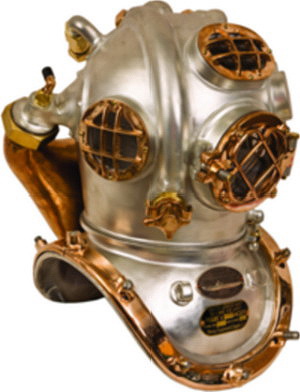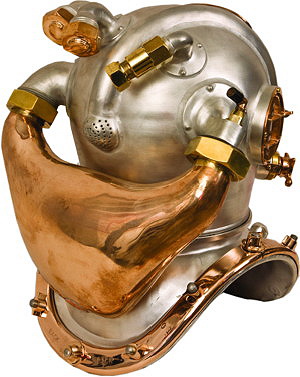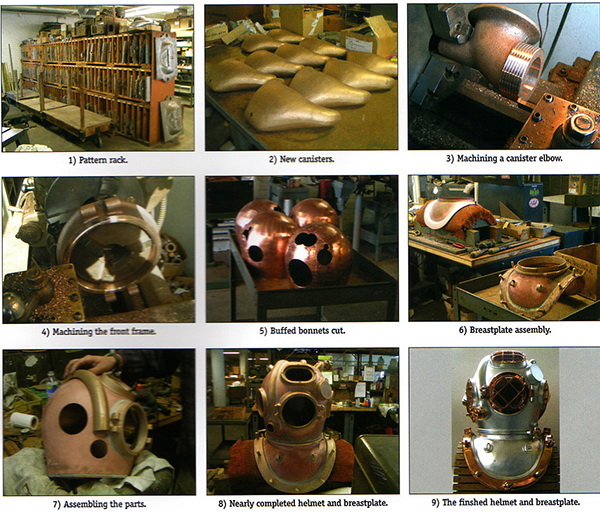

In Spring of 2007 DESCO was commissioned by the Historical Diving Society USA to produce 26 US Navy Helium Helmets to commemorate the successful salvage of the USS Squalus. This operation was the first practical use of Oxy Helium diving and as the culmination of years of research by the US Navy and civilian researchers. There were 26 Helmets produced in this series to commemorate the 24 crewmen and 2 civilians who were lost when the USS Squalus sank during a training dive on May 23, 1939.
Photo courtesy Steve Barsky

These helmets are the third in a series of commemorative helmets produced for the HDS. Each helmet in this issue will bear a special USS Squalus tag and will be numbered 1-26 to 26-26 2009. U.S. Navy Mark V Helium Helmet, Commemorating the 70th Anniversary, 1939-2009, of the salvage of the submarine U.S.S. Squalus.
Its construction is as a double tinned U.S. Navy Mark V Helium Helmet with brass canister constructed to the original USN specifications by DESCO, who manufactured these helmets during World War II for the navy. By the end of World War II DESCO had become the largest diving equipment manufacturing company in the world. Each helmet has a large custom HDS sterling silver plaque designed by Torgny Jewelers, featuring the outline of the U.S.S. Squalus, and the individual helmet number. All four straps are individually numbered. Each canister is individually numbered. This style of helmet came to public attention during the U.S. Navy's salvage of the U.S.S. Squalus in 1939. Details of the salvage operation are in The Salvage of the U.S.S. Squalus, by E.R. Cross, Journal of Diving History, issue 59, Spring 2009. A Limited Edition of 26 individually numbered helmets, with HDS Certificate of Authenticity, these helmets were manufactured and available at $13,600 each. SOLD OUT.
Photo courtesy Steve Barsky
Details of the construction work on the Mark V Helium Helmet.

Above photo and text courtesy of HDS with thanks to Daron Jones, The Journal of
Diving History.
Return to Part 1 │ Visit part 3